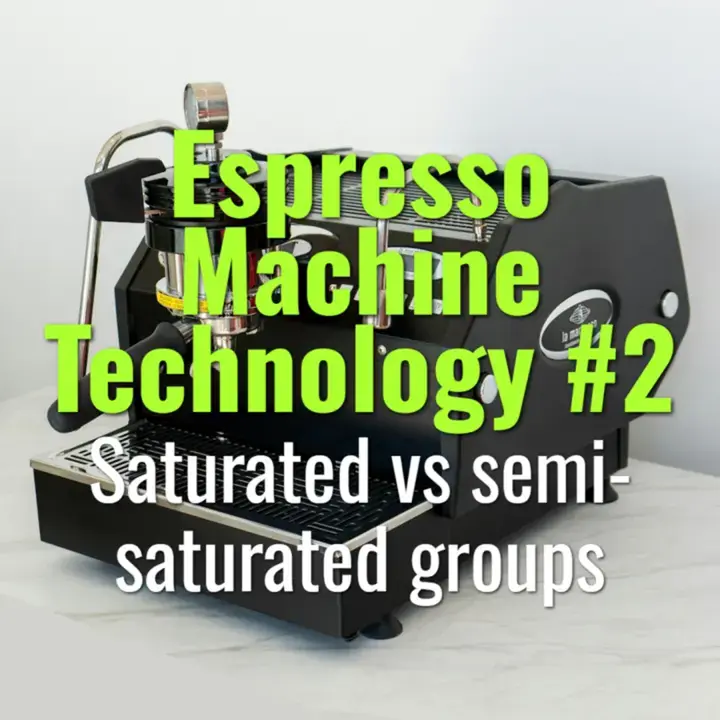Saturated vs semi-saturated groups
The differences between saturated and semi-saturated espresso group designs, and how they influence thermal stability and consistency.
- Coffee Basics Nerds
- 1 min read
Article 2 of 12 in Espresso Machine Technology/

Saturated Groups
- Definition: Grouphead is directly integrated with the brew boiler, constantly surrounded by water at brew temperature.
- Characteristics:
- Extremely stable temperature.
- Fast heat-up time.
- Sensitive to changes—adjustments to boiler temp reflect quickly in the group.
- Advantages:
- Precise thermal control, ideal for specialty coffee.
- Consistency across shots.
- Drawbacks:
- More expensive.
- Repairs can be more complex since group is tied to boiler.
Semi-Saturated Groups
- Definition: Grouphead is connected to the boiler via a thermosyphon loop but not fully immersed.
- Characteristics:
- Retains heat through circulating water.
- Takes longer to heat up fully.
- Some temperature variation during high-volume use.
- Advantages:
- Durable and easier to service.
- Found in many workhorse commercial machines.
- Drawbacks:
- Less precise thermal stability compared to saturated groups.
- Requires more flushing to stabilize temperature.
Flavor and Workflow Impacts
- Saturated groups: More consistent flavor clarity, especially useful for light roasts.
- Semi-saturated groups: Slightly less precise but reliable for medium to dark roasts and high-volume service.
Summary
- Saturated groups: Maximum stability and responsiveness, best for high-precision brewing.
- Semi-saturated groups: Robust and serviceable, but with less thermal consistency. Choice depends on balance between performance precision and operational durability.